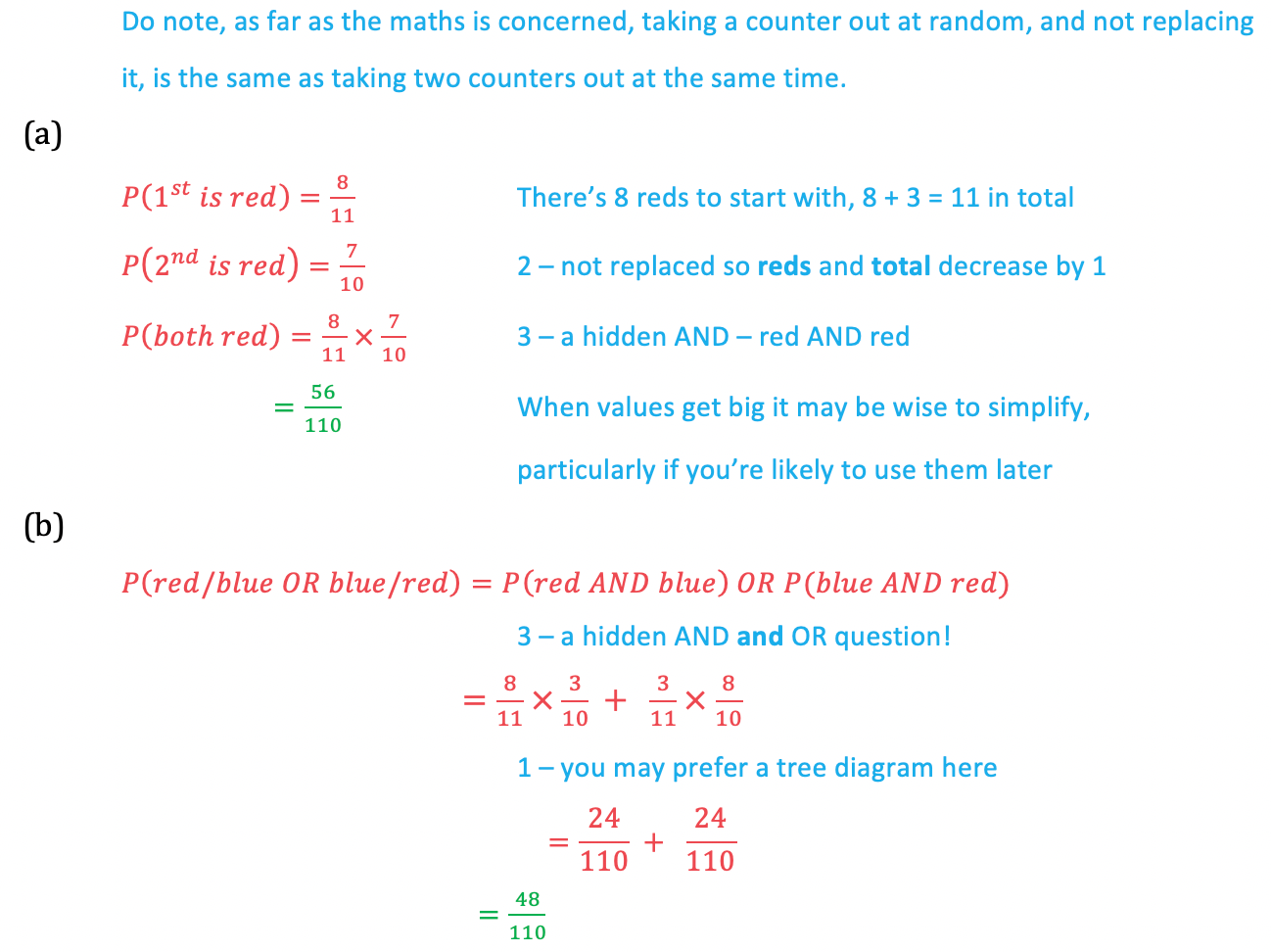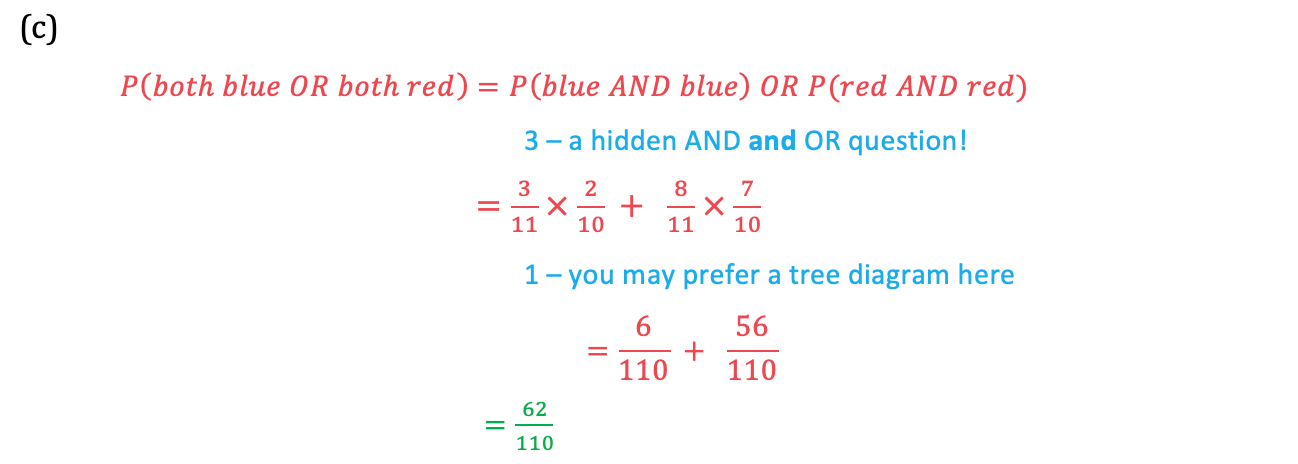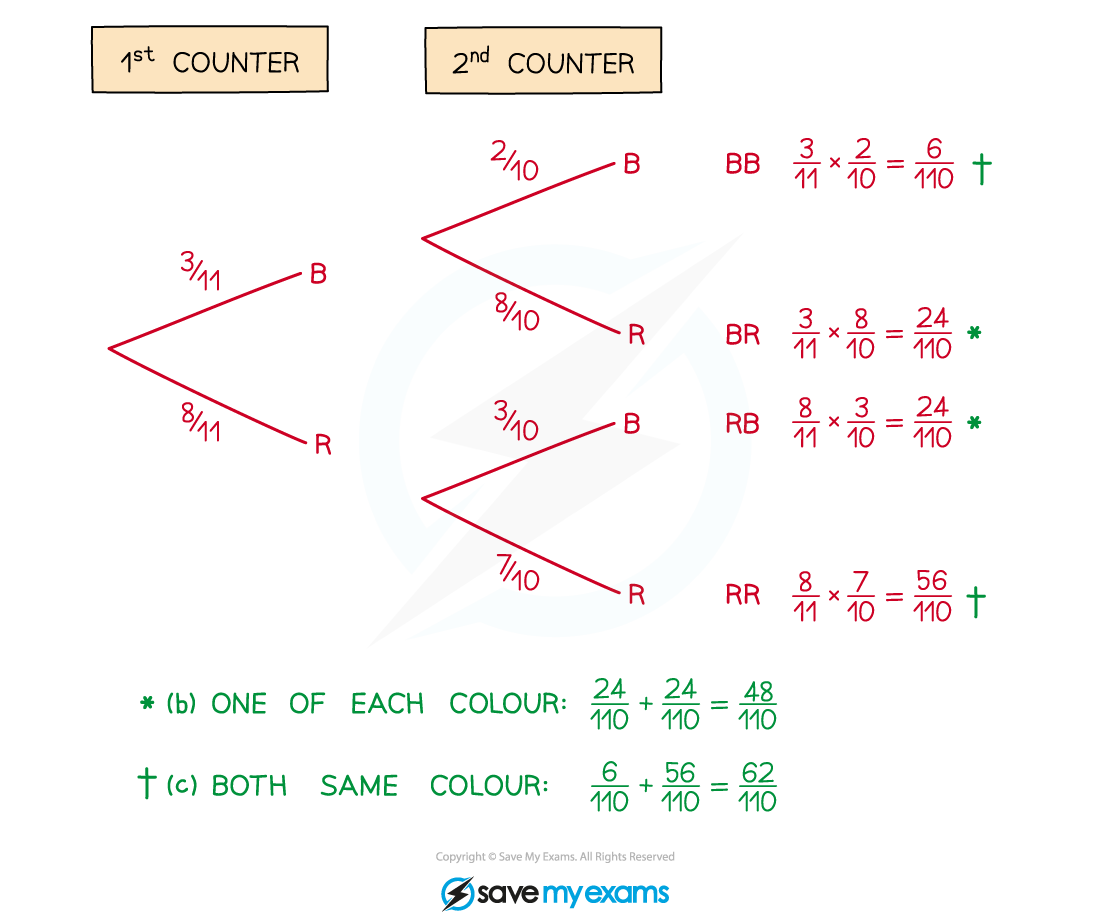- 翰林提供学术活动、国际课程、科研项目一站式留学背景提升服务!
- 400 888 0080
Edexcel IGCSE Maths 复习笔记 6.6.1 Combined Probability - Basics
Edexcel IGCSE Maths 复习笔记 6.6.1 Combined Probability - Basics
What do we mean by combined probabilities?
- This can mean lots of things as you’ll see over these notes and the next set
- In general it means we have more than one ‘thing’ (trial/event) to bear in mind and these things may be independent, mutually exclusive or may involve an event that follows on from a previous event drawing a second counter from a bag
1. Tree diagrams
- Especially useful when we have more than one trial but are only concerned with two outcomes from each
- Even more useful when probabilities change for the second experiment
2. Replacement
- Are items being selected at random replaced or not?
- If not then numbers will decrease as the situation progresses and so probabilities change – this is often called conditional probability
3. AND’s and OR’s
- AND means for independent events
- OR means for mutually exclusive events
4. Sum of all probabilities is 1
- This is a very basic fact that gets lost along the way in more complicated probability questions – but it is one of the best ‘tricks’ you can use!
- A good example of its use is when you want the probability of something being “non zero”:P(x ≥ 1) = 1 - P(x = 0)
Worked Example


Worked Example

Worked Example


Worked Example

转载自savemyexam

最新发布
© 2025. All Rights Reserved. 沪ICP备2023009024号-1









